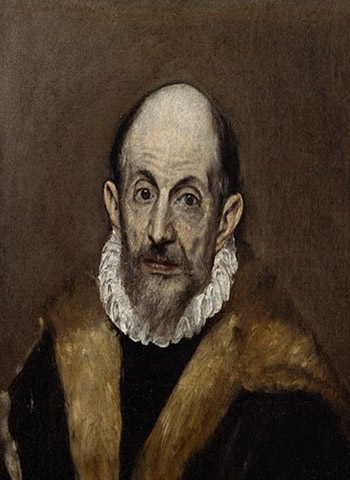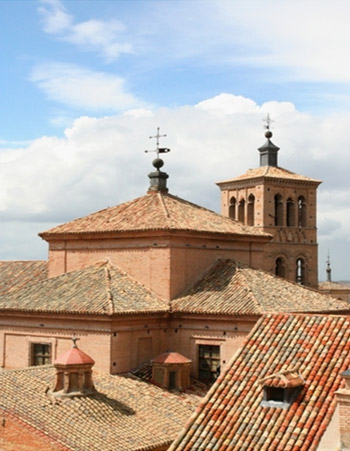The era shifts to the arts and literature of ancient Greece and Italy. Creativity and imagination bring achievements. Humanist scholars concerned about mankind are exalted. Painters begin to use worldly images in their work. Literacy among the secular world begins when the printing press is invented in Europe in the 15th century. North America is a beneficiary. See the recreated Gutenberg printing press at The International Printing Museum.
El Greco (c.1541-7 - 1614) The young student synthesizes what he learns from previous study in the iconic Byzantine tradition so he decides to leave his home on the Isle of Crete for Venice. There, he gains exposure to the rich colors and masterful, painting techniques of Titian and Tintoretto.
When you combine what El Greco learns in Venice and his trip to Rome to see Michelangelo’s newly developed, Mannerist style you can see the emergence of his signature style.
The nickname, “The Greek,” he is called in Italy, follows him when the artist settles in Toledo, Spain. El Greco becomes popular and comfortable in Toledo, but all is not roses after he makes the mistake of criticizing Michelangelo’s abilities as a painter. Then a dispute over the price he demands for a painting leads to litigation and a scar on his subsequent career.
After El Greco"s death, his work falls into obscurity until the 19th century when artists and scholars begin again to praise his achievements.

Late Spanish Renaissance, Mannerist movement (c.1530 - 1600). Religious tensions run high in Italy and spread to Germany and France.
Mannerists respond to the conflict over new standards set by the Council of Trent; the Catholic Church, in Rome, responds by launching the Counter-Reformation. Artists begin to express their painful, emotional responses by dramatically lengthening various body parts, and distorting figures to appear odd, yet elegant.
The Mannerist style is blamed for disrupting the unity and balance of Renaissance classicism.
That opinion changes and Mannerists are credited for bridging the gap between the High Renaissance period and the Baroque period that follows.
Mannerism in painting spills over into literature and music. Overly complicated wording and complex patterns are recognizable. Madrigal singing consists of two or more mostly independent melodic voices.
Go on to Describe, Analyze, Interpret & Conclude. Contact me for help.

The Burial of the Count of Orgaz (1586. Oil on canvas.190 x 140 in. (480 x 360 cm.) represents the "Golden Age of Painting in Spain."
The work-of-art is considered the most beautifully crafted religious painting and the finest. Earthly and heavenly beings are respectively real and surreal. This account is inspired by a local legend surrounding a humble Priest at Santo Tomé Church.
The priest wins his lawsuit against the town of Toledo for withholding payment due the church for two hundred years. With the money, he commissions El Greco to paint a special portrait to refurbish the burial chapel, in honor of their generous benefactor, Don Gonzalo Ruiz, referred to as "The Count."
The legend goes on to explain that El Greco must agree to depict Orgaz being put to rest by Saints Stephen and Augustine. Miraculously, they descend from heaven to assist in the burial service and many of the town's notable citizenry participate. Of course, everyone in Toledo will be there to see them and pay their respects to Count Orgaz.
This is El Greco's parish church and he includes himself and his young son Jorge Manuel. Father and son look directly at you—note the strong resemblance.